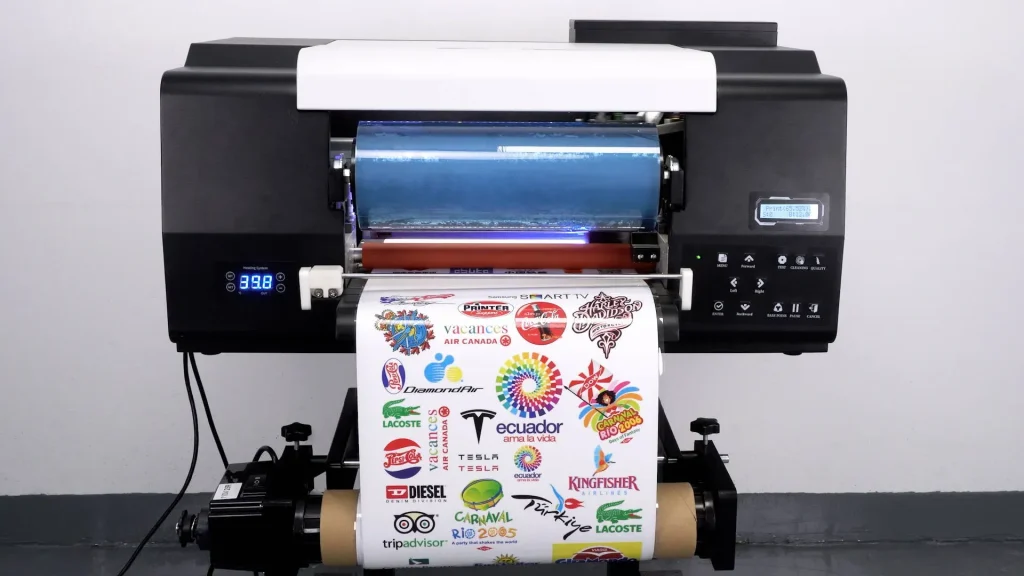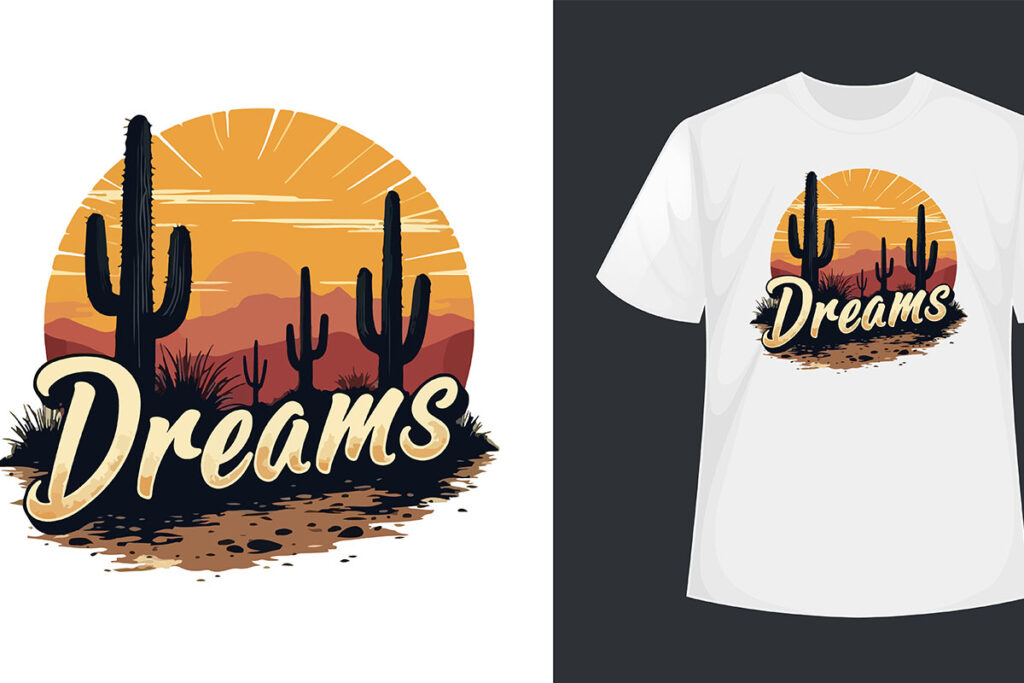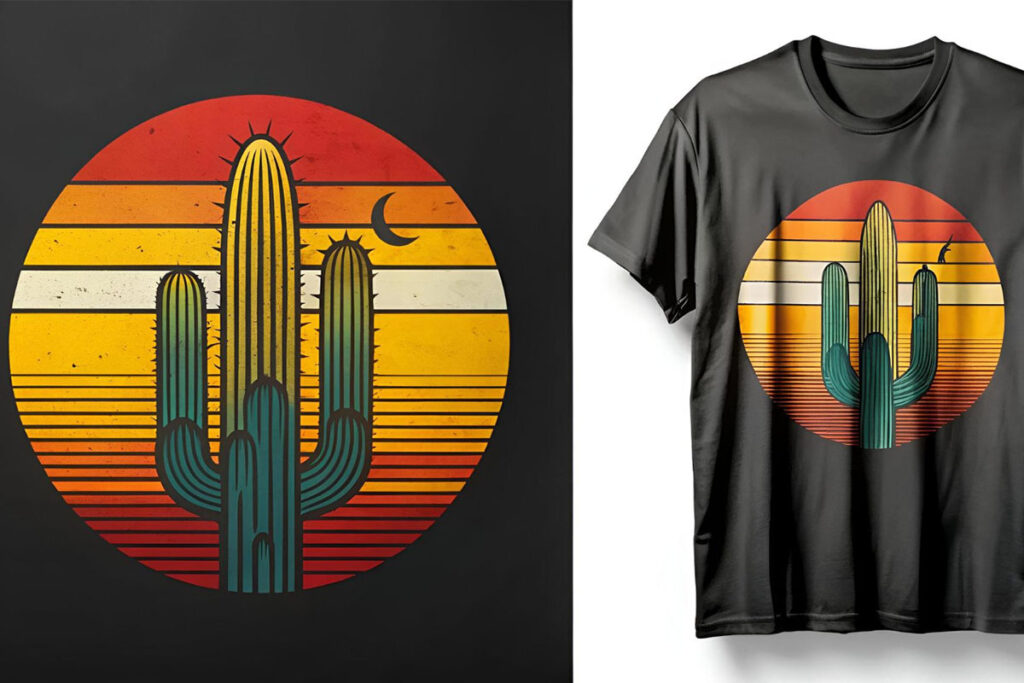UV DTF (Direct-to-Film) printing has emerged as a groundbreaking method in the realm of sustainable printing, offering an eco-friendly alternative to traditional processes. This innovative printing technology utilizes ultraviolet light to cure inks, drastically reducing the use of harmful solvent-based inks and lowering emissions of volatile organic compounds (VOCs). As companies increasingly prioritize environmentally friendly printing solutions, UV DTF stands out for its durability, quality, and versatility across various applications. The shift towards this eco-conscious method not only aligns with sustainability goals but also positions businesses to meet the rising consumer demand for sustainable products. In the evolving landscape of printing technology, UV DTF is proving to be an essential solution for organizations striving to minimize their environmental impact while maintaining high-quality outputs.
Also known as ultraviolet direct-to-film printing, this modern technique represents a significant advancement in sustainable printing methods. By leveraging UV light to instantly cure inks, this printing approach ensures that the final product not only achieves vibrant colors but does so with a reduced ecological footprint. As the market embraces innovative printing technologies, many industries are turning to DTF printing due to its ability to print on a diverse array of surfaces while adhering to environmentally friendly practices. This transition is not merely about improving print quality; it’s about ensuring that the future of printing is aligned with sustainable principles and reducing overall waste. With the industry moving toward greater eco-awareness, ultraviolet DTF printing is setting the standard for what sustainable printing technology should look like.
Understanding UV DTF Printing Technology
UV DTF printing technology represents a cutting-edge approach to the printing industry, utilizing advanced ultraviolet light to cure inks on various substrates. This method differs significantly from traditional techniques, which often rely on olfactory-irritating solvents and inks containing high levels of VOCs (Volatile Organic Compounds). By embracing UV DTF, businesses not only contribute to an environmentally friendly printing ecosystem but also align themselves with consumer demand for green alternatives.
This innovative technology facilitates a seamless printing process that is not only efficient but also significantly reduces waste generated during production. As industry trends shift toward sustainability, understanding the mechanics behind UV DTF printing can empower businesses to make informed decisions that enhance their eco-friendly initiatives.
The Benefits of Eco-Friendly Ink in UV DTF Printing
The core of UV DTF printing lies in its eco-friendly ink technology, which is free from the harmful substances found in traditional inks. By using ultraviolet curing inks, printers can create vibrant, long-lasting prints while minimizing environmental impact. This sustainable approach aligns with the growing emphasis on reducing the carbon footprint associated with printing and promotes a healthier workplace for employees.
In addition to being safe for the environment, UV-curable inks offer excellent adhesion and durability. These characteristics mean that products printed using UV DTF technology are not only visually striking but also resistant to fading and wear. This boosts the value of printed materials and underscores the importance of incorporating eco-friendly ink solutions into modern printing practices.
Energy Efficiency: A Catalyst for Sustainability
Energy efficiency is a critical component of sustainable printing practices, and UV DTF printing shines in this area. Unlike traditional heat curing methods that consume excessive energy, UV curing technology requires significantly less power to achieve optimal results. This reduction in energy consumption not only lowers operational costs for printing businesses but also plays a key role in decreasing overall carbon emissions.
Investing in energy-efficient technologies like UV DTF is more than just a financial consideration; it reflects a company’s commitment to responsible resource use and environmental stewardship. By minimizing energy usage, businesses can contribute to a larger narrative of sustainability in the printing sector, appealing to eco-conscious consumers who prioritize brands with a clear commitment to environmental responsibility.
Maximizing Quality and Durability with UV DTF
Quality is paramount in the printing industry, and UV DTF printing offers unparalleled durability compared to traditional print methods. The prints are resistant to environmental factors such as moisture and UV exposure, ensuring longevity across various applications. This quality ensures that businesses can trust their printed materials to maintain aesthetic appeal over time, reducing the need for frequent reprints.
Furthermore, by focusing on high-quality outputs, companies utilizing UV DTF printing can significantly cut down on material waste in their production processes. This aligns with the principles of sustainable printing, emphasizing the importance of creating products that last, ultimately contributing to a more efficient and eco-friendly printing operation.
Versatility Across Materials: Expanding Sustainable Practices
The versatility of UV DTF printing enables businesses to explore a broad range of applications, from textiles to rigid surfaces. This adaptability helps companies diversify their product lines while adhering to sustainable practices. As industries evolve, having the ability to print on various materials without compromising environmental integrity is crucial for staying competitive.
By embracing this flexible printing technology, businesses can participate in a circular economy, utilizing resources efficiently and minimizing waste. This shift toward versatile and sustainable practices not only meets customer demands but also positions companies to be leaders in the eco-friendly printing movement.
The Growing Demand for Sustainable Printing Solutions
Market dynamics have shifted significantly, with many consumers actively seeking out businesses that prioritize sustainability. The adoption of UV DTF printing reflects this changing landscape, where eco-friendly practices are becoming a vital aspect of brand identity. Companies that leverage UV DTF technology can better appeal to environmentally conscious consumers, positioning themselves for long-term success.
Reports indicate that integrating sustainable printing technologies is not just beneficial but essential for future competitiveness. As consumer awareness around environmental issues rises, industries must adapt by investing in solutions like UV DTF printing, which satisfy not only operational needs but also the ethical expectations of their customer base.
Frequently Asked Questions
What is UV DTF printing and how does it promote sustainable printing?
UV DTF printing, or Direct-to-Film printing, is a modern printing technology that uses ultraviolet light to cure inks on various surfaces. This process utilizes eco-friendly ink technology, which has lower levels of VOCs (Volatile Organic Compounds) compared to traditional solvent-based inks, thus significantly reducing environmental pollution and supporting sustainable printing practices.
How does UV DTF printing utilize eco-friendly ink technology?
UV DTF printing employs ultraviolet curing inks that minimize harmful waste compared to conventional inks. By reducing reliance on solvents, which are often used in traditional printing, UV DTF aligns with eco-friendly printing initiatives, contributing to cleaner air quality and a safer working environment.
What are the energy efficiency benefits of UV DTF printing technology?
UV DTF printing technology is known for its energy efficiency, requiring significantly less energy than traditional heat curing methods. This reduction in energy consumption translates to lower operational costs and a smaller carbon footprint, making it a viable option for businesses committed to sustainable printing.
What types of materials can be printed using UV DTF technology?
UV DTF printing is versatile and can be applied to a wide variety of materials, including rigid surfaces and textiles. This adaptability allows businesses to expand their product ranges while maintaining sustainable practices, aligning with the principles of environmentally friendly printing.
How does the durability of UV DTF prints contribute to sustainable practices?
The durability of prints produced through UV DTF technology means they are resistant to fading and wear, reducing the need for reprints. This not only lowers production costs but also minimizes waste, fitting perfectly within the goals of sustainable printing by promoting long-lasting quality and resource efficiency.
Why is the adoption of UV DTF printing growing in the market?
The increasing consumer demand for sustainable printing practices is driving the growth of UV DTF printing. Companies investing in this eco-friendly printing technology can attract eco-conscious customers and stay ahead in a competitive market, making UV DTF an essential component for any business aiming for sustainability.
| Key Points | Details |
|---|---|
| What is UV DTF Printing? | A modern printing method using ultraviolet light to cure eco-friendly inks. |
| Eco-Friendly Ink Technology | Utilizes UV inks that emit lower levels of VOCs, minimizing environmental pollution. |
| Energy Efficiency | Requires less energy compared to traditional methods, contributing to a reduced carbon footprint. |
| Durability and Quality | Produces durable prints that resist fading, reducing the need for reprints. |
| Wide Range of Applications | Can print on various materials, expanding product offerings while maintaining sustainability. |
| Market Growth and Adoption | Increasing demand for sustainable practices boosts the adoption of UV DTF technology. |
Summary
UV DTF printing stands out as the ultimate solution for sustainable printing. By utilizing eco-friendly inks and modern curing techniques, it effectively reduces environmental harm while maintaining high quality and durability. With its capacity to print on diverse materials and its energy-efficient nature, UV DTF not only meets but exceeds the growing consumer demand for sustainability in the printing industry. As more businesses adopt this innovative technology, they not only align with eco-conscious values but also secure their competitive edge in a rapidly evolving market. The future of printing is bright with UV DTF, paving the way for sustainable practices that benefit both companies and the environment.



